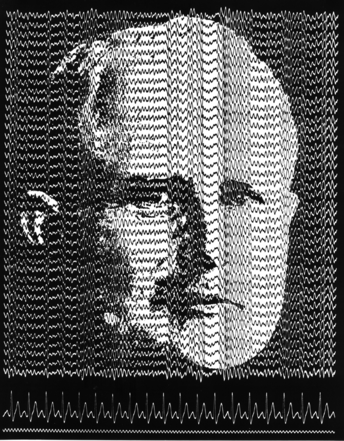Hans Berger1873–1941
Berger recorded electrical potentials on the surface of the human scalp and plotted the electroencephalogram. His life-long search was for an objective index of subjective experience. Small cortical potentials had been recorded from the exposed brains of rabbits, cats, and monkeys as early as 1875 by the Liverpool surgeon, Richard Caton (1842-1926), but no success had been achieved with recordings from humans. After many vain attempts on his patients, Berger achieved some success with recordings from his teenage son and from himself, and he was able to report in 1929: “I believe I have indeed discovered the electroencephalogram in man”; thirteen more papers on the human EEG followed. They are examples of experimental rigour and cautious interpretation. Berger found that “in many experimental subjects opening of the eyes, while recording the curve from the skull surface, caused an immediate change in the E.E.G. and that during mental tasks, e.g. when solving a problem in arithmetic, the mere naming of the task sometimes caused the same change of the E.E.G.” After demonstrating the characteristics of EEG in normal observers he applied the technique to pathological cases. Berger is shown together with the first tracing of the alpha rhythm published, in his second report of 1930.
